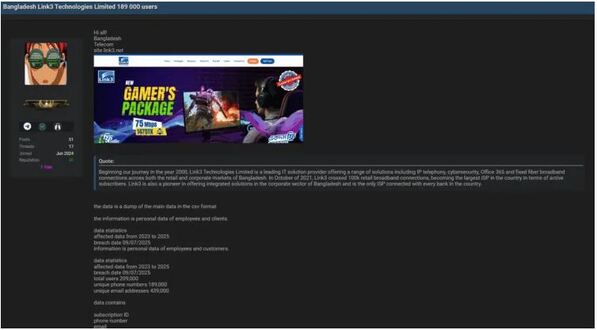Microsoft updated a security flaw in its AppLocker software, but the North Korean Lazarus Group was able to use it for a cyberattack before the update.
Avast researchers found the flaw in Microsoft software under the CVE-2024-21338. This flaw allowed Lazarus to use an updated version of its own malware called “FudModule” to access the admin-to-kernel boundary.
By infosecbulletin
/ Wednesday , September 17 2025
A threat actor claims to have breached Link3, a major IT solutions and internet service provider based in Bangladesh. The...
Read More
By infosecbulletin
/ Wednesday , September 17 2025
Check point, a cyber security solutions provider hosts an event titled "securing the hyperconnected world in the AI era" at...
Read More
By infosecbulletin
/ Tuesday , September 16 2025
Cross-Site Scripting (XSS) is one of the oldest and most persistent vulnerabilities in modern applications. Despite being recognized for over...
Read More
By infosecbulletin
/ Monday , September 15 2025
Every day a lot of cyberattack happen around the world including ransomware, Malware attack, data breaches, website defacement and so...
Read More
By infosecbulletin
/ Monday , September 15 2025
A critical permission misconfiguration in the IBM QRadar Security Information and Event Management (SIEM) platform could allow local privileged users...
Read More
By infosecbulletin
/ Monday , September 15 2025
Australian banks are now using bots to combat scammers. These bots mimic potential victims to gather real-time information and drain...
Read More
By infosecbulletin
/ Saturday , September 13 2025
F5 plans to acquire CalypsoAI, which offers adaptive AI security solutions. CalypsoAI's technology will be added to F5's Application Delivery...
Read More
By infosecbulletin
/ Saturday , September 13 2025
The Villager framework, an AI-powered penetration testing tool, integrates Kali Linux tools with DeepSeek AI to automate cyber attack processes....
Read More
By infosecbulletin
/ Saturday , September 13 2025
Samsung released its monthly Android security updates, addressing a vulnerability exploited in zero-day attacks. CVE-2025-21043 (CVSS score: 8.8) is a...
Read More
By infosecbulletin
/ Saturday , September 13 2025
Albania has appointed the first AI-generated government minister to help eliminate corruption. Diella, the digital assistant meaning Sun, has been...
Read More
The zero-day was fixed by Microsoft on February 13th as part of their February Patch Tuesday update. Avast shared details of the exploit on February 29th.
Avast researchers have discovered that the FudModule now has additional features. One of these features is the ability to suspend protected process light (PPL) processes found in Microsoft Defender, Crowdstrike Falcon, and HitmanPro.
Lazarus Group changed their tactics, switching from using their own vulnerable driver to using a more direct zero-day exploit approach to escalate privileges to kernel level.
Avast also discovered a new Lazarus remote access Trojan (RAT), about which the vendor pledges to release more details later.
“Though their [Lazarus Group’s] signature tactics and techniques are well-recognized by now, they still occasionally manage to surprise us with an unexpected technical sophistication,” the Avast report said. “The FudModule rootkit serves as the latest example, representing one of the most complex tools Lazarus holds in their arsenal.”
Source: Avast, darkreading
 InfoSecBulletin Cybersecurity for mankind
InfoSecBulletin Cybersecurity for mankind














